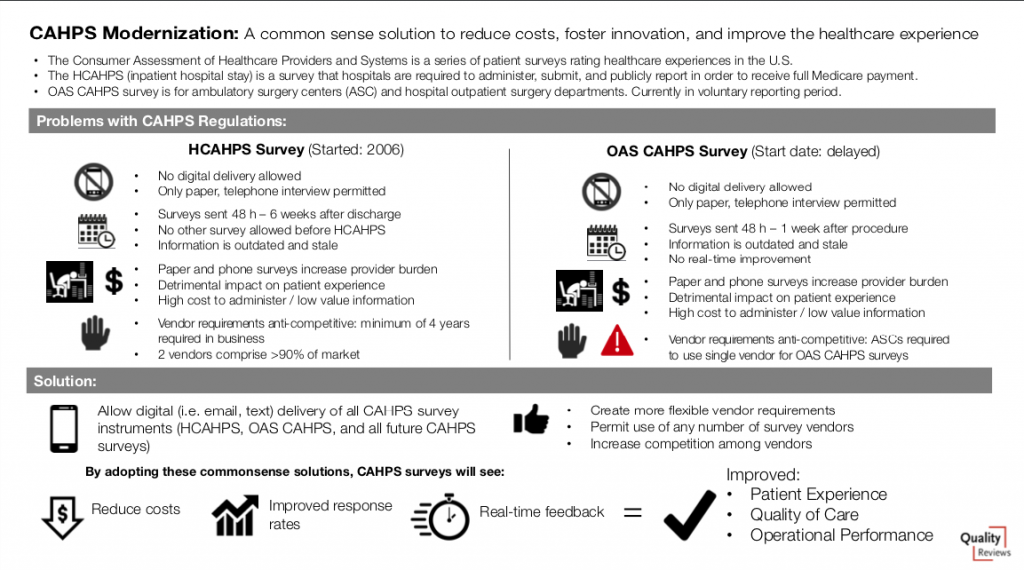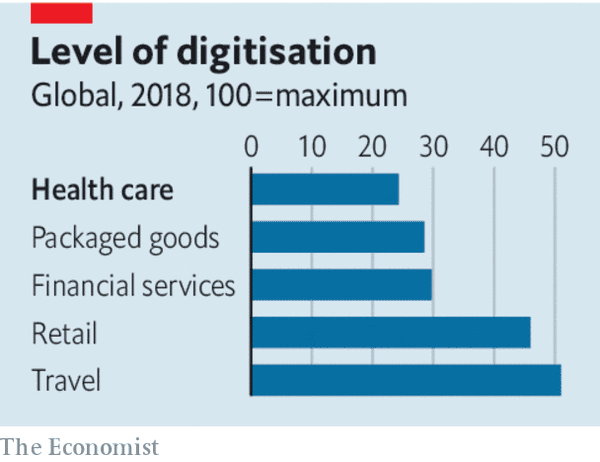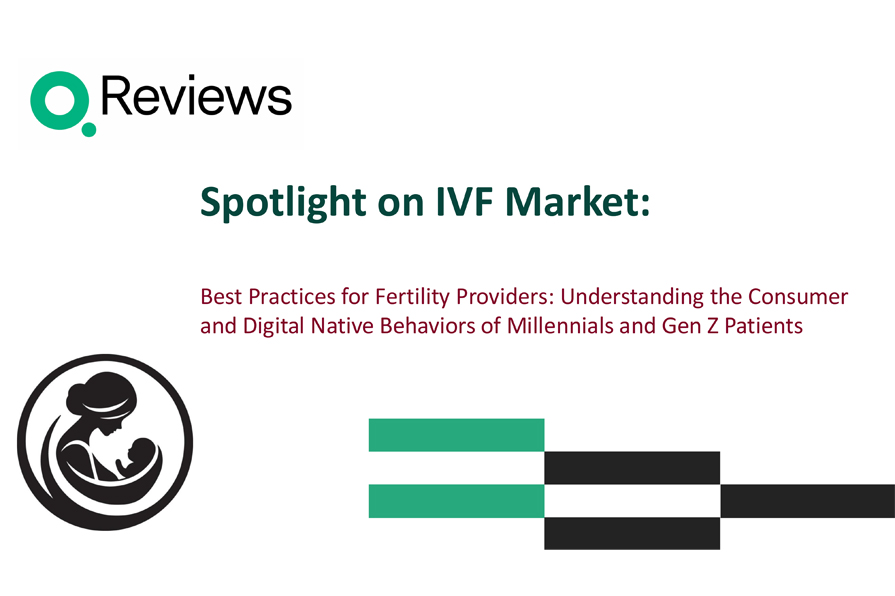
The World Has Gone Digital — Why Hasn’t the CAHPS Survey?

Technology has moved at a dizzying pace over the past few decades, with the internet and smartphones completely transforming the way we go about our day-to-day lives. The CAHPS survey has long been the standard method of patient satisfaction measurement, but today’s healthcare consumer experience requires online patient feedback — so why hasn’t CAHPS gone digital?
Initially, many businesses felt threatened by the digital upheaval. Eventually, virtually all of them recognized the opportunity and evolved to accommodate this new way of life. Industries like communications, retail, food service, and even slower-moving industries like finance quickly adapted to keep up in this landscape.
Others, like healthcare, lag behind the rest, as The Economist recently documented. But with other industries raising the bar, patients and members expect their healthcare consumer experience to be the same across industries.
Of course, there have been incredible advancements in healthcare over the years. We can’t ignore breakthroughs in medicine, surgical procedures, and our understanding of the human body. We can now diagnose and treat patients better than ever, but the industry still largely relies upon traditional outdated systems. Case in point: the Consumer Assessment of Healthcare Providers and Systems (CAHPS) survey.
Challenges With the CAHPS Survey
Since July 2007, the Centers for Medicare & Medicaid Services (CMS) has required hospitals to collect, submit, and publicly report patient satisfaction surveys through the Hospital Consumer Assessment of Healthcare Providers and Systems (HCAHPS). That is the only way to receive full Medicare payment.
Unfortunately, HCAHPS surveys can be administered only by mail, telephone, mail with telephone follow-up, and/or Active Interactive Voice Response (IVR). Online patient feedback, on the other hand, is not allowed.
These traditional patient satisfaction measurement methods place an excessive financial and administrative burden on providers. Providers then must use outside vendors to chase down patients on their behalf. And with just two vendors comprising 90% of the market, providers have little choice in who they work with. While it is not yet mandatory, the market for Outpatient and Ambulatory Surgery (OAS) CAHPS survey administrators is equally restrictive.
CAHPS Regulations
Beyond the administrative challenges of the CAHPS survey, the retrospective data it captures has its limits. CAHPS regulations stipulate that patients must be surveyed between 48 hours and six weeks after discharge.
Add to that the time it takes for their responses to be recorded and reported back to you, and the data becomes stale. By the time you become aware of an unhappy patient, there’s little you can do about the complaint. Online patient feedback, on the other hand, is instantaneous.
As the world continues to embrace digital communication, fewer patients take the time to respond through mail or on the phone. After all, they’re not being reached on their preferred channels.
“People are becoming accustomed to the technology and efficiency of online surveys,” wrote Charles Kahn and Claudia Salzberg. They say in a Federation of American Hospitals article, “When an electronic survey is not an option we are seeing survey response rates decline.”
Because of these constraints, providers do not have the timely, robust data they need to make meaningful improvements to the patient experience. It’s not like we don’t have the technology or demand to correct the issue. If you can order food, make financial transactions, and even sign legal documents digitally, why can’t you take a survey the same way?
Solving the CAHPS Problem
As of June 2019, 96 percent of all Americans owned a smartphone. This figure spans across demographics, including vulnerable populations such as the elderly and housing insecure. In a recent blog post, CMS tackled the myth that seniors aren’t using technology. “Sadly, this type of ageism isn’t anything new. But it is inaccurate,” the blog reads. “CMS research has demonstrated repeatedly that many people with Medicare own smartphones and tablets, download apps, and use them all the time.”
Healthcare experts believe email- and text-based CAHPS patient satisfaction measurement presents an opportunity to give voice to marginalized groups.
In an op-ed, healthcare representatives wrote in favor of more efficient modes of surveying. They believes results can “fully represent the experiences of patient populations that are hard to reach through traditional methods.”
And this digital adoption is increasing, especially with the pandemic. With practitioners shifting to a remote model to prevent a COVID spread, patients are becoming more comfortable using electronic devices for their healthcare consumer experience.
Savvy providers are turning to digital solutions that provide online patient feedback to supplement their CAHPS feedback. This, however, shouldn’t be a siloed experience. Allowing patients to respond via texts and email would lead to higher response rates and quicker turnarounds. Most importantly, providers can tackle patient experience challenges as they crop up.
We urge CMS to modernize the CAHPS survey program to include digital means of survey administration. Not only will this improve the CAHPS survey-taking experience for patients — it might just lead to better overall health outcomes.










